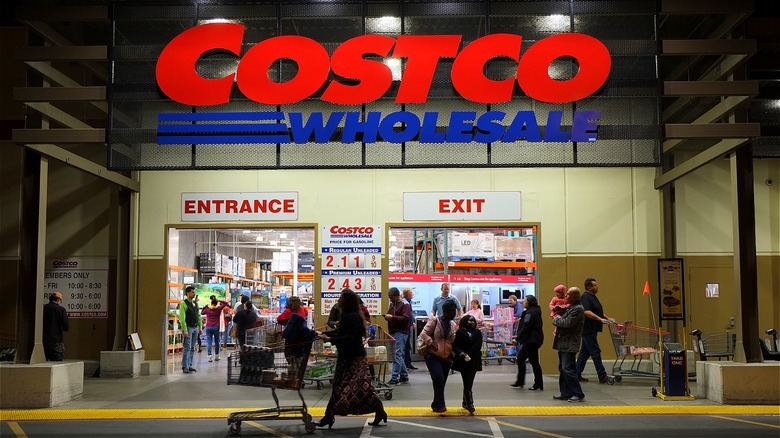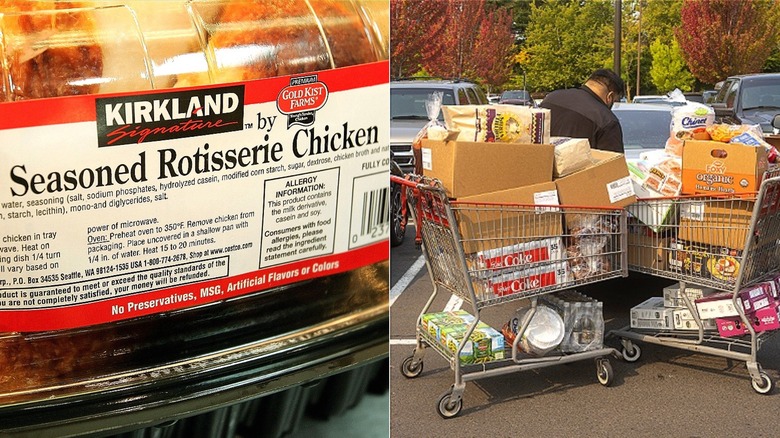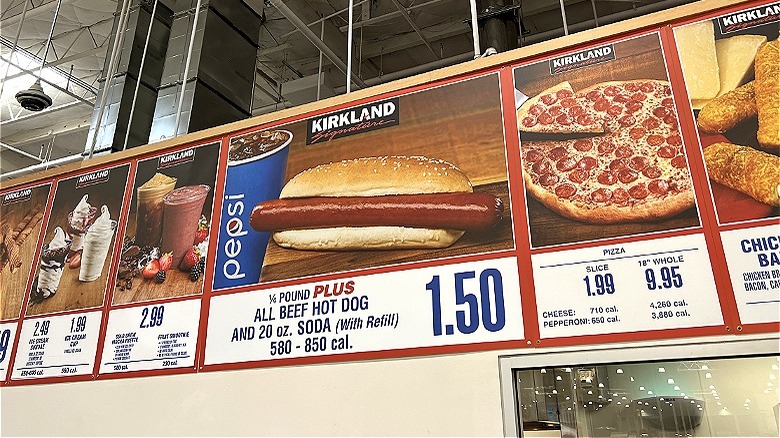The Real Reason Costco's Rotisserie Chicken Is So Cheap
There's no question most American consumers love eating chicken. In fact, the average American consumed more than 100 pounds of chicken in 2022, according to the National Chicken Council. In 2021, a whopping 106 million birds were sold by a single source alone: Costco.
Unlike so many other items that have been subject to rampant inflation in the years following the COVID-19 pandemic, Costco's ready-to-eat rotisserie chicken has retained its $4.99 price tag since the product was introduced approximately 30 years ago. Though there was a brief $1 price hike in 2008 amidst the Great Recession, the price was quickly ratcheted back to $4.99. In fact, Costco is so committed to the bargain poultry it opened a 400,000-square-foot facility in Nebraska in 2019 to better control the production process.
So why the obsession with keeping the famous bird's price such a bargain? In a 2023 earnings call, Costco Chief Financial Officer Richard Galanti said Costco's rotisserie chicken is "an investment in low prices to drive membership, to drive sales in a big way." That's a fancy way of saying that the product is a "loss leader" for the warehouse store giant.
Costco hopes you buy more than just a chicken
The classic definition as a loss leader is when a business prices a product at a below-market rate — sometimes even below what it costs to produce — in order to attract new or existing customers who will hopefully purchase additional, more profitable products. That's why, in most cases, Costco's rotisserie chickens — sold under the store's in-house Kirkland brand name — are located toward the rear of the stores. That's not by accident. Planners are hoping that en route to grabbing dinner, you'll get sidetracked and wind up purchasing a new television, engagement ring, or that above-ground swimming pool you've been considering.
Outside of Costco, loss leaders are frequently apparent around the holidays, such as Black Friday specials. Simarly, to encourage shoppers to spend more money, regular grocery stores also employ loss leaders in the form of inexpensive essential items, such as milk or eggs and, as with Costco, typically place them in the back of the store so customers have to pass by various other items in transit to buying these staples.
The nemesis of stores offering loss leaders are what's known in the industry as "cherry pickers." Cherry pickers are shoppers that only purchase the loss leader or other deep discount items, without purchasing any other higher-margin products. However, if you ask us, that's just smart shopping.
Rotisserie chicken isn't Costco's only loss leader
In a 2015 Seattle Times interview with Costco CFO Richard Galanti, the warehouse giant was said to be comfortable losing $30 to $40 million each year in gross margin in order to keep selling the rotisserie chickens for $4.99, and input prices have only risen since then, exacerbating the gap. Still, the strategy of luring shoppers in the doors must be working or else the practice would have been discontinued.
That's not to mention that Costco boasts a 90% renewal rate from its members worldwide, which is even higher in the United States. If you're interested in joining Costco to sample the bargain bird for yourself, a standard Gold Star membership costs $60 per year, though there are a few ways to shop at Costco without a membership.
Also, if you happen to feel a little peckish while shopping at a Costco store, but rotisserie chicken isn't your jam, know that the chain has another famous edible loss leader. It's a ¼-pound all-beef hot dog and 20-ounce soda pairing for $1.50.


